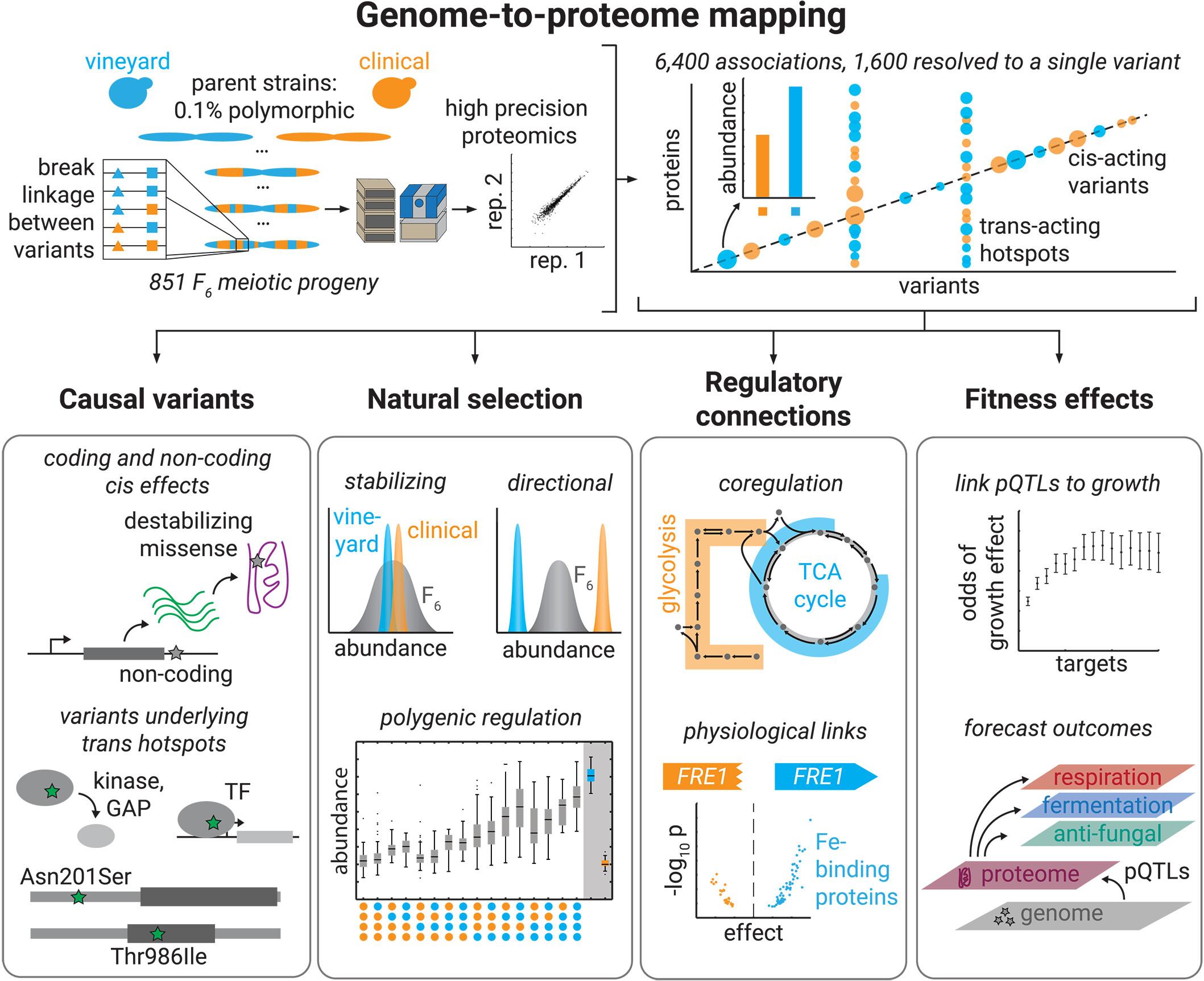基因组-蛋白质组图谱揭示了自然变异如何驱动蛋白质组多样性和形状适应性
IF 45.8
1区 综合性期刊
Q1 MULTIDISCIPLINARY SCIENCES
引用次数: 0
摘要
理解遗传变异如何转化为复杂的表型仍然是一个根本性的挑战。在这项工作中,我们通过在适应不同环境的两种酵母菌株之间的800个后代中绘制基因组-蛋白质组关系来解决这一问题。尽管亲本之间的遗传距离不大,但我们观察到显著的蛋白质组多样性,并绘制了超过6400种基因型-蛋白质关联,其中超过1600种与个体遗传变异有关。蛋白质组适应来自于一个保守的顺式和反式调节变异网络,这些变异通常来自于传统上与基因调节无关的蛋白质。该图谱使我们能够预测不同条件下的有机体适应性效应。通过以前所未有的分辨率连接基因组和蛋白质组学景观,我们的研究为预测自然遗传变异的表型结果提供了一个框架。本文章由计算机程序翻译,如有差异,请以英文原文为准。

A genome-to-proteome map reveals how natural variants drive proteome diversity and shape fitness
Understanding how genetic variation translates into complex phenotypes remains a fundamental challenge. In this work, we address this by mapping genome-to-proteome relationships in 800 progeny of a cross between two yeast strains adapted to distinct environments. Despite the modest genetic distance between the parents, we observed notable proteomic diversity and mapped more than 6400 genotype-protein associations, with more than 1600 linked to individual genetic variants. Proteomic adaptation emerged from a conserved network of cis- and trans-regulatory variants, often originating from proteins not traditionally linked to gene regulation. This atlas allowed us to forecast organismal fitness effects across diverse conditions. By connecting genomic and proteomic landscapes at unprecedented resolution, our study provides a framework for predicting the phenotypic outcomes of natural genetic variation.
求助全文
通过发布文献求助,成功后即可免费获取论文全文。
去求助
来源期刊

Science
综合性期刊-综合性期刊
CiteScore
61.10
自引率
0.90%
发文量
0
审稿时长
2.1 months
期刊介绍:
Science is a leading outlet for scientific news, commentary, and cutting-edge research. Through its print and online incarnations, Science reaches an estimated worldwide readership of more than one million. Science’s authorship is global too, and its articles consistently rank among the world's most cited research.
Science serves as a forum for discussion of important issues related to the advancement of science by publishing material on which a consensus has been reached as well as including the presentation of minority or conflicting points of view. Accordingly, all articles published in Science—including editorials, news and comment, and book reviews—are signed and reflect the individual views of the authors and not official points of view adopted by AAAS or the institutions with which the authors are affiliated.
Science seeks to publish those papers that are most influential in their fields or across fields and that will significantly advance scientific understanding. Selected papers should present novel and broadly important data, syntheses, or concepts. They should merit recognition by the wider scientific community and general public provided by publication in Science, beyond that provided by specialty journals. Science welcomes submissions from all fields of science and from any source. The editors are committed to the prompt evaluation and publication of submitted papers while upholding high standards that support reproducibility of published research. Science is published weekly; selected papers are published online ahead of print.
 求助内容:
求助内容: 应助结果提醒方式:
应助结果提醒方式:


